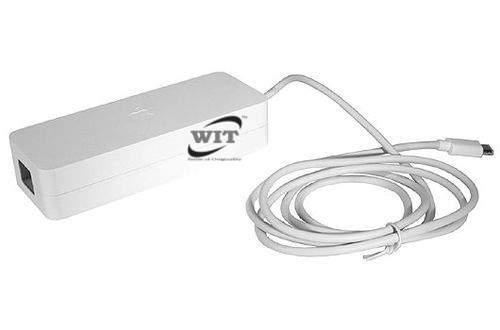
So at that point, you'll need bigger and more expensive power supplies in your laptop/desktop, which means bigger and more expensive laptops and desktops. And some displays require quite a bit of power. But what that design WOULD do is significantly increase the amount of power your desktop/laptop itself had to draw, since now it would have to pull enough power to run itself and provide power to your external display. The display isn't going anywhere, so all that would save you is having to connect one extra power cable to your surge protector, which isn't a big inconvenience in the first place. In terms of a display receiving power over USB-C, here again that doesn't make a ton of sense. Having to connect a separate power cable on a desktop isn't a big deal since you won't be connecting/disconnecting it all the time, and typically people have plenty of wall outlets or a surge protector for power cables. And another reason is that since desktops aren't designed to come and go like laptops are, there isn't as much value to having a desktop receive power over USB-C even if 100W would be sufficient. That's partly because some desktops require more than 100W of power (in fact even some laptops require more than that).
#Audiophile mac mini power supply mac#
(Some Dell USB-C displays even have built-in Ethernet, so that single USB-C cable can give your system a wired Ethernet connection to your network as well.)īut desktops like the Mac Mini typically don't support being powered over USB-C. For a laptop that you might take with you sometimes, that is quite convenient because it means you only have to connect/disconnect a single cable, rather than separate cables for power, video, and USB. Since USB-C can carry power, video, and USB data all simultaneously, if you have a display that supports providing USB PD power and also has built-in USB ports for other peripherals, you can connect your laptop to that display using only the USB-C cable and you will be charging your laptop, sending a video signal, and working with USB peripherals plugged into that display - all through that single cable.

And USB PD when it comes to displays is typically implemented to allow the display to provide power to an attached system, like a laptop, not draw power from it. USB PD when it comes to systems is typically found on laptops in order to allow them to be charged via USB-C.

Some USB-C connectors only provide basic "legacy" USB power without supporting the USB PD spec at all. But not every device with a USB-C connector is required to support being powered that way, and not every device with a USB-C connector is required to support providing that much power. The spec currently allows for up to 100W.

USB Power Delivery is a specification that allows sending various levels of power over USB-C connectors.


 0 kommentar(er)
0 kommentar(er)
